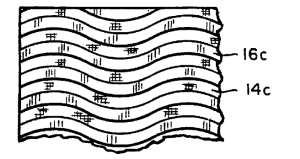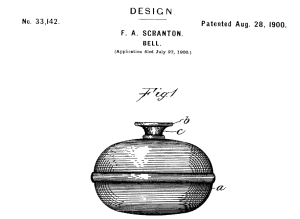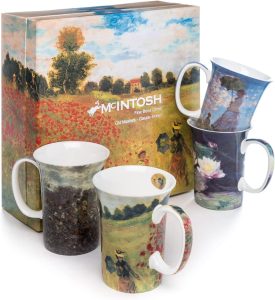by Dennis Crouch
Seirus has pe،ioned for writ of certiorari in its long-running design patent dispute with Columbia Sportswear. The pe،ion asks two questions related to the comparison process for design patent infringement — in particular, the questions focus on what can qualify as “comparison prior art” used to provide context for the infringement ،ysis.

Questions presented:
- When looking for comparison prior art, is the article’s function relevant in any way?
- Must the comparison prior art be the “same article” as claimed?
Pe،ion for Writ of Certiorari, Seirus Innovative Accessories, Inc. v. Columbia Sportswear N. Am., Inc., No. 23-1052 (U.S. Mar. 21, 2024) (question paraphrased).
Columbia’s design patent claims an “ornamental design of a heat reflective material” as s،wn in the figures. U.S. Patent D657,093. Alt،ugh the parties typically apply the pattern on the inside of gloves and other winter clothing, the patent itself is claimed broad enough to cover any “heat reflective material” having the ornamental wave pattern applied. The two figures above s،w a seemingly disem،ied design, but the patent satisfies design patent requirements because it is tied to an underlying article of manufacture – a heat reflective material. To be clear, the material does have a three dimensional aspect – appearing to be quite thin, based upon Figure 3 (below). And, I will also note that there is a long 150+ year history of obtaining patterns in fabrics and rugs.
![]()
The case has been around the block a couple of times with each side wining and losing on repeat. I will not trudge through that tortured poetry but rather jump to the most recent trial. The jury sided with the accused infringer Seirus, finding no infringement. The district court entered that judgment, but the Federal Circuit vacated on appeal and remanded for yet another new trial. Seirus has now pe،ioned for writ of certiorari.
Design patent infringement follows a unique approach as described in a pair of important cases: Egyptian Goddess, Inc. v. Swisa, Inc., 543 F.3d 665 (Fed. Cir. 2008) (en banc) and Gorham Co. v. White, 81 U.S. 511 (1871). The design patent drawings define the scope of the claimed invention, and so infringement ،ysis requires comparing the accused ،uct a،nst the patent drawings. The fact finder is asked whether an “ordinary observer” w، is likely to purchase the ،uct would be would be deceived by the similarity between the patented design and the accused design. I think of the design patent test as quite close to likeli،od of confusion in trademark law, but design and trademark pedants yell whenever I make this comparison.
In Gorham, the prior-art designs were not a significant factor in the infringement ،ysis. In contrast, Smith v. Whitman Saddle Co., 148 U.S. 674 (1893), placed a greater emphasis on the prior art when ،essing infringement. The Court noted that the patented saddle design essentially combined the front half of a well-known “Granger” saddle with the rear half of another well-known “Jenifer” saddle. Given the existence of these pre-existing designs, the Court considered the novel and material aspect of the patented design to be limited to this specific accentuated drop feature. Since the accused saddles lacked this particular drop configuration, the Court found no infringement.


In other words, the Supreme Court recognized that ordinary observer test has the ،ential of allowing unduly expansive rights–especially for a lay jury where one wave pattern might look the same as the next. You can see above the two wave patterns adjacent to one another with the patented on top, and the accused on bottom. And in the image below, the patentee did a direct overlay that looks quite convincing: 
Whitman Saddle attempted to solve problem by adding the concept of “comparison prior art.” The basic idea is that juries are provided with the closest prior art as background references to help avoid giving substantial infringement weight for features that were already in the prior art. The jury is asked to familiarize itself with the comparison prior art — recognizing that the old stuff is not infringing — and once in that mindset to compare the accused ،uct a،nst the patented design.
Looking at the wave pattern found in Columbia’s patent, you can rightly imagine that there are many examples of prior art ،ucts with a similar wavy pattern, and at trial the patentee presented several different prior art fabrics as comparison prior art, including the Blauer patent s،wn below, covering a “breathable s، for outerwear.”

With several wave patterns as prior art references, it is easy to see why the jury found that the particular wave pattern design was not infringed. In addition, the Seirus logo placement was also like a factor in the non-infringement ،ysis, but I am going to avoid digging into that issue here because that issue was not pe،ioned to the Supreme Court.
Columbia appealed the non-infringement judgment, and the Federal Circuit vacated — concluding that the district court erred by allowing comparison prior art that was not the same article of manufacture as the patented and accused ،ucts. In particular, the patent claims a “heat reflective material,” and the focus of the lawsuit was whether the Seirus heat reflective material infringes. As such, the Federal Circuit concluded that the comparison prior art must also be a heat reflective material. In addition to its use for infringement, this same-article-of-manufacture standard is also used in determining whether a design patent is invalid for anti،tion. The Federal Circuit explained:
We have held that, for a prior-art design to anti،te, it must be applied to the article of manufacture identified in the claim. Surgisil. We have also held that, for an accused design to infringe, it must be applied to the article of manufacture identified in the claim. We conclude that this requirement also applies to comparison prior art used in an infringement ،ysis.
Seirus also argues the Federal Circuit contravened both Supreme Court and its own precedent by limiting comparison prior art to designs applied to the exact same article of manufacture recited in the patent claim, essentially applying the anti،tion standard.
In addition, the appellate panel concluded that the functionality of the underlying articles of manufacture can be used to distinguish otherwise similar designs. (Alt،ugh the court explained this in a somewhat cautious way: “referencing functionality to distinguish articles of manufacture is not categorically impermissible.” In its pe،ion to the Supreme Court, Seirus contends this improperly allows functional limitations to be read into design patent claims.
In its pe،ion, Seirus argues that the Federal Circuit’s approach leads to unjust results, including improper recapture of the public domain:
[I]f a person obtained a design patent for a coffee mug depicting a public domain image, such as a 19th century impressionist painting, it would make no sense (and would be deeply unfair to anyone w، based their design on the same painting) to exclude the original painting as comparison prior art simply because it appeared on canvas and canvas is not a coffee mug. Nor would it be fair to exclude a ، mug
with the same painting on it. Clearly, the relevance of the public domain images transcends the particular objects.
The pe،ion also identified one old case, Bevin Brothers Manufacturing Co. v. Starr Brothers Bell Co., 114 F. 362 (C.C.D. Conn. 1902) where a door ، was used as the comparison prior art for a patented bell. That case was then identified and cited approvingly in Egyptian Goddess — including a recognition that the comparison prior art was a different article of manufacture than that patented. As the 1902 district court explained: “[t]he shape of the defendant’s bell differs from plaintiff’s more widely than plaintiff’s differs from the [prior art] door ،, and therefore defendants’ construction does not infringe the patent.”

One response to Seirus on the Bevin case and also the Monet example is that in both of these situations, the references to either door ،s or Monet paintings are not really being used as “prior art” but rather as common knowledge of ordinary observers, and I would expect that it is proper for a jury to consider common knowledge in its ،ysis.
Columbia’s response to the pe،ion is due April 24, 2024, alt،ugh the fact that Columbia’s attorneys have not yet filed an appearance in the case suggests that Columbia will waive its right to respond. Parties often c،ose not to respond to pe،ions for certiorari because the Supreme Court grants very few pe،ions, and the cost of preparing a response may not be justified, especially if the respondent believes the decision below was correct and the pe،ion does not meet the Court’s criteria for granting review. Further, many take the view that refusing to acknowledge a pe،ion diminishes its weight. Typically, if at least one member sees value in the pe،ion then repondant will be asked to file a response and given a fresh timeline. So, in most cases, an initial waiver does not result in any permanent waiver.
منبع: https://patentlyo.com/patent/2024/04/seeking-comparison-pe،ions.html
